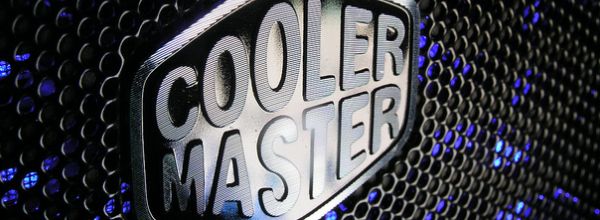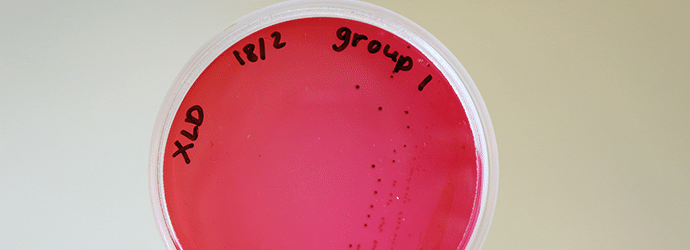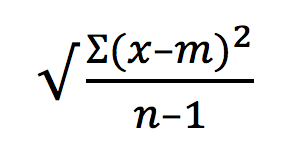If you look at the composition of peripheral blood, using
hematology microscopy, you’ll see that it’s composed of multiple different cell types, including monocytes. It’s possible to isolate these different components to study and experiment on them directly. So, if you’ve done a few experiments and had fun with THP-1 cells, you can move on to working directly with primary human monocytes to see if your work translates.
Isolating monocytes requires blood. Lots and lots of blood, depending on your downstream assay of choice. The yield can vary wildly by donor (if they had a cold at the time of donating their blood, for example, you could get lots more cells), but on average you can hope to isolate around 1×10
5 monocytes per ml of whole human blood.
When planning your experiments, it is important to remember that monocytes have a half-life of 1-3 days. So, while not as fragile as other blood cells (I’m looking at you, neutrophils), it is always best to use blood that’s as fresh as possible. So, having acquired a bag of fresh blood from a willing participant, let’s get started!
Stage 1: Isolating PBMCs (Peripheral Blood Mononuclear Cells) from Whole Blood
Before you Begin Isolating PBMCs
Ensure you have signed any relevant COSHH forms and follow all safety procedures when handling human samples.
This step takes approximately 2-3 h, depending on the starting volume of blood.
Equipment for Isolating PBMCs
- Bench top centrifuge
- Electronic pipette gun
- Pasteur pipette
- 50 ml centrifuge tubes
- Haemocytometer/automated cell counter
Reagents for Isolating PBMCs
- Isolation buffer: Phosphate-buffered saline (PBS) (Ca2+/Mg2+ – free), supplemented with 2% Foetal Bovine Serum (FBS) + 3 mM Ethylenediaminetetraacetic acid (EDTA)
- Ficoll® Paque Plus
- Cell culture medium: RPMI-1640, supplemented with 20% FBS + 100 IU/ml of Penicillin, 100 µg/ml of Streptomycin
- Freeze medium: Cell culture medium + 10% DMSO
Protocol for Isolating PBMCs
- Add EDTA to whole blood to a final concentration of 3 mM. EDTA is a chelating agent, and its job is to irreversibly bind calcium and magnesium, which in this situation will stop the blood from clotting. Try to ignore the wave of nausea that may come upon you – working with blood made me feel a bit sick to begin with!
- Dilute the whole blood 1 : 1 with isolation buffer. The purpose of the EDTA in this is the same as above: to bind divalent cations to prevent blood from clotting. Similarly, ensure that the PBS you use is Ca2+/Mg2+ free (this should be stated on the bottle). Finally, FBS is a supplement containing a rich source of growth factors and is there to keep the cells happy and healthy during the isolation process.
- Layer 35 ml of diluted blood on top of 15 ml of a gradient medium with a density of 1.077 g/ml (the most commonly used is one called Ficoll® -Paque Plus which is sufficient for most applications; however, there is also a premium version that is Quality Management System certified to ISO 13485:2012) in 50 ml centrifuge tubes. Density gradient centrifugation is a good way of isolating cell types from whole blood. In this case granulocytes and erythrocytes have a higher cell density than mononuclear cells; therefore, during centrifugation they will sediment through the density gradient medium and pellet at the bottom. You must be very gentle when layering so as not to disturb the gradient, so be patient if you are fortunate enough to have a large volume of blood to work with. Don’t worry about the red blood cells that start settling in the bottom of the tubes because you’re taking so long. Also, try to ignore the cramp developing in your arm from pipetting so slowly.
- Centrifuge at 400 x g for 30 min at room temperature with no brake. Again, this is important so as not to disturb the gradient. This will take FOREVER. Not really, but without the brake it will take at least as long for the rotor to stop as it was spinning for in the first place!
- See that cloudy layer just sitting on top of the density gradient medium? That’s your PBMCs. Using a Pasteur pipette, go straight through the plasma and ‘hoover up’ the layer. Try and collect it all in one go, working to minimise the amount of density gradient medium and plasma you also hoover up. Transfer your haul to clean 50 ml centrifuge tubes (maximum 10 ml PBMCs per tube).
- Add 3x volume of isolation buffer and mix gently by inverting. The process of washing your PBMCs removes any plasma or density gradient medium.
- Centrifuge at 300 x g for 10 min at room temperature (brake back on) and remove supernatant gently so as not to lose any cells. If proceeding immediately with step 2, resuspend each pellet in 1 ml of buffer, pool together and count your cells. Average yield is 1×106 PBMCs per ml of whole blood.
- Personally, if you are going down the magnetic separation route to isolate monocytes then I would just carry on; it’s relatively quick and you won’t have to worry about cell viability. If you do need to freeze down the PBMCs, resuspend the pellets in a total of 1 ml freeze medium in a cryovial. Place vial in Mr Frosty™ freezing container (provides a rate of cooling of -1°C/min) and store in the -80°C freezer overnight before transferring to liquid nitrogen storage. These are general steps to take when freezing down stocks of any cells to ensure good cell viability upon recovery. When recovered, count cells and proceed with Stage 2.
Stage 2: Isolating Monocytes from PBMCs
Before you begin Isolating Monocytes
If using the EasySep™ Human Monocyte Isolation Kit from STEMCELL, this should take around 15 min.
Equipment for Isolating Monocytes from PBMCs
The Big Easy magnet (STEMCELL)
15 ml centrifuge tubes
Reagents for Isolating Monocytes from PBMCs
EasySep™ Negative Selection Human Monocyte Isolation Kit (STEMCELL)
Protocol for Isolating Monocytes from PBMCs
PBMCs are any blood cells that have a round nucleus. This includes lymphocytes (T cells, B cells, NK cells) as well as our desired monocytes, which account for around 10% of PBMCs. One quick and easy way to isolate monocytes from PBMCs is to use immunomagnetic negative selection cell separation. Bit of a mouthful, but essentially, magnetic particles can grab on to the
unwanted cells via antibody complexes (that’s the negative selection part) and can be pulled away using a magnet leaving your monocytes behind, pure and untouched and ready for your experiment.
Why Use Negative Selection for Isolating Monocytes?
Immunomagnetic positive selection involves targeting the cells you
are interested in with antibody complexes that recognise cell surface antigens specific to that cell type; e.g., CD14 which is expressed on monocytes. A couple of examples of these kits are from
STEMCELL and
Miltenyi Biotec.
Negative selection is preferable to positive with this cell type, as the labelling process can risk ‘activating’ the monocytes. There are several kits out there that perform this task very efficiently; however, they can be expensive. The magnet usually must be purchased separately. There’s no harm in getting in touch with companies to ask if there’s the opportunity to try a sample of their product and a loan of the magnet before you commit to buying anything. I can personally vouch for the negative selection
Stemcell kit; however, there are others out there that are likely just as effective.
Miltenyi Biotec and
ThermoFisher also manufacture similar products.
As the process uses a kit, it is straightforward and quick. Here is a brief overview of the process using the STEMCELL kit:
- Make sure you follow the kit instructions and prepare your sample to the recommended cell concentration within the volume range appropriate to the size of your magnet.
- You’ll add an ‘human monocyte isolation cocktail’, consisting of an Fc receptor blocking antibody and combination of monoclonal antibodies that recognise specific cell surface markers to target non-monocytes for removal. The Fc receptor blocking antibody is important as monocytes express this receptor, therefore they need to be blocked as we want the monocytes to get left behind.
- An optional ‘platelet removal cocktail’ can be added. This is recommended for optimum recovery when using PBMCs prepared from whole human blood.
- Following this short incubation, magnetic particles are added which bind the antibodies in step 2.
- After another short incubation, the tube is placed inside a magnet. The magnetic particles will pull the non-monocytes away, leaving a monocyte-enriched cell suspension behind that can simply be poured into a fresh tube.
These isolated monocytes should be used immediately; as mentioned earlier, they have a half-life of 1-3 days so you want them to be as fresh as possible. They are suitable for activation with cytokines, incubation with compounds, migration assays, flow cytometry, and many more assays.
It’s always nice to translate results gained from experiments on a cell line to primary cells, so if you can acquire some fresh blood then go for it
Sarah gained her undergraduate degree in Biochemistry and PhD in Cardiovascular Sciences from the University of Glasgow. Sarah is currently Medical Writer for CMC Connect in Glasgow.







